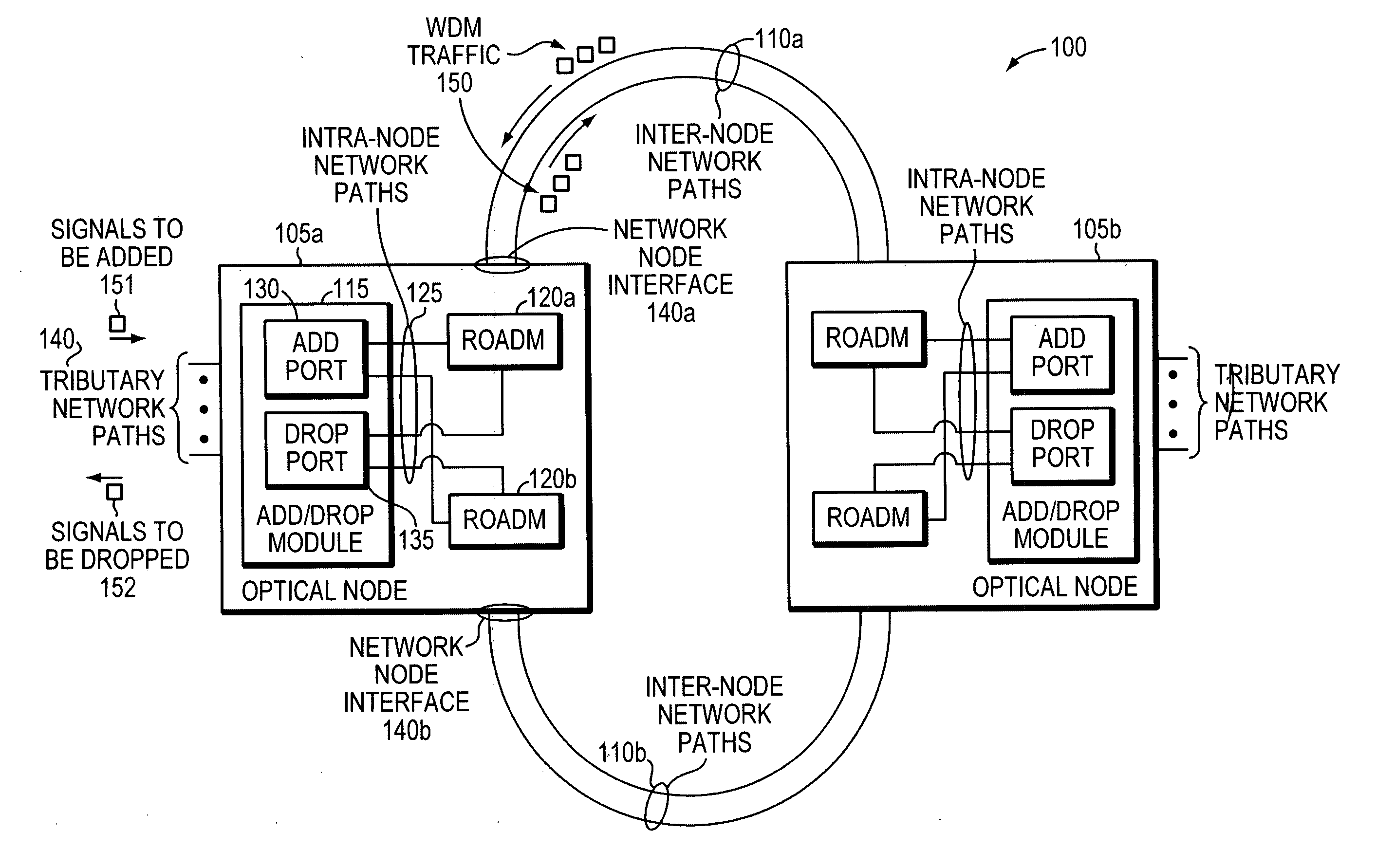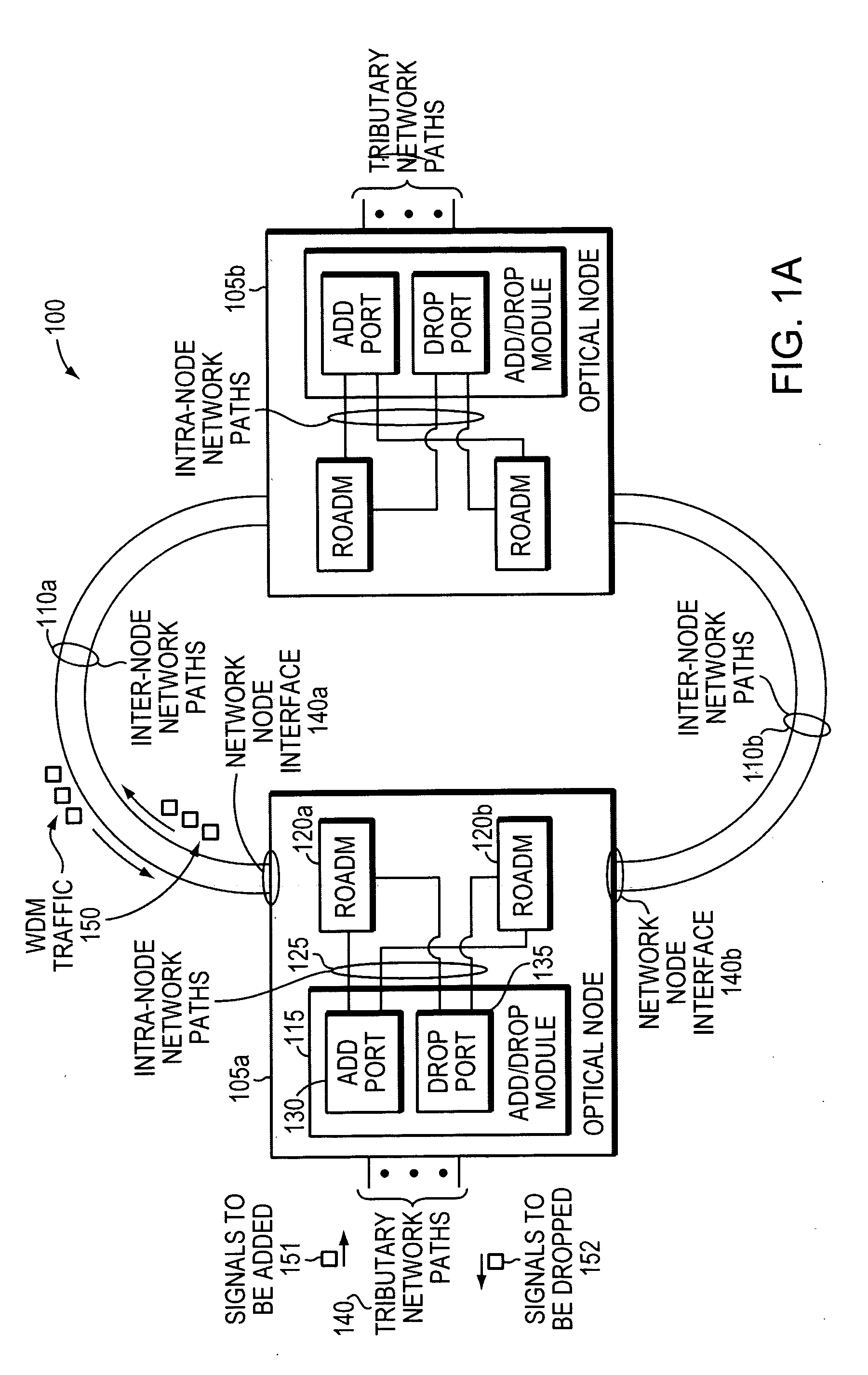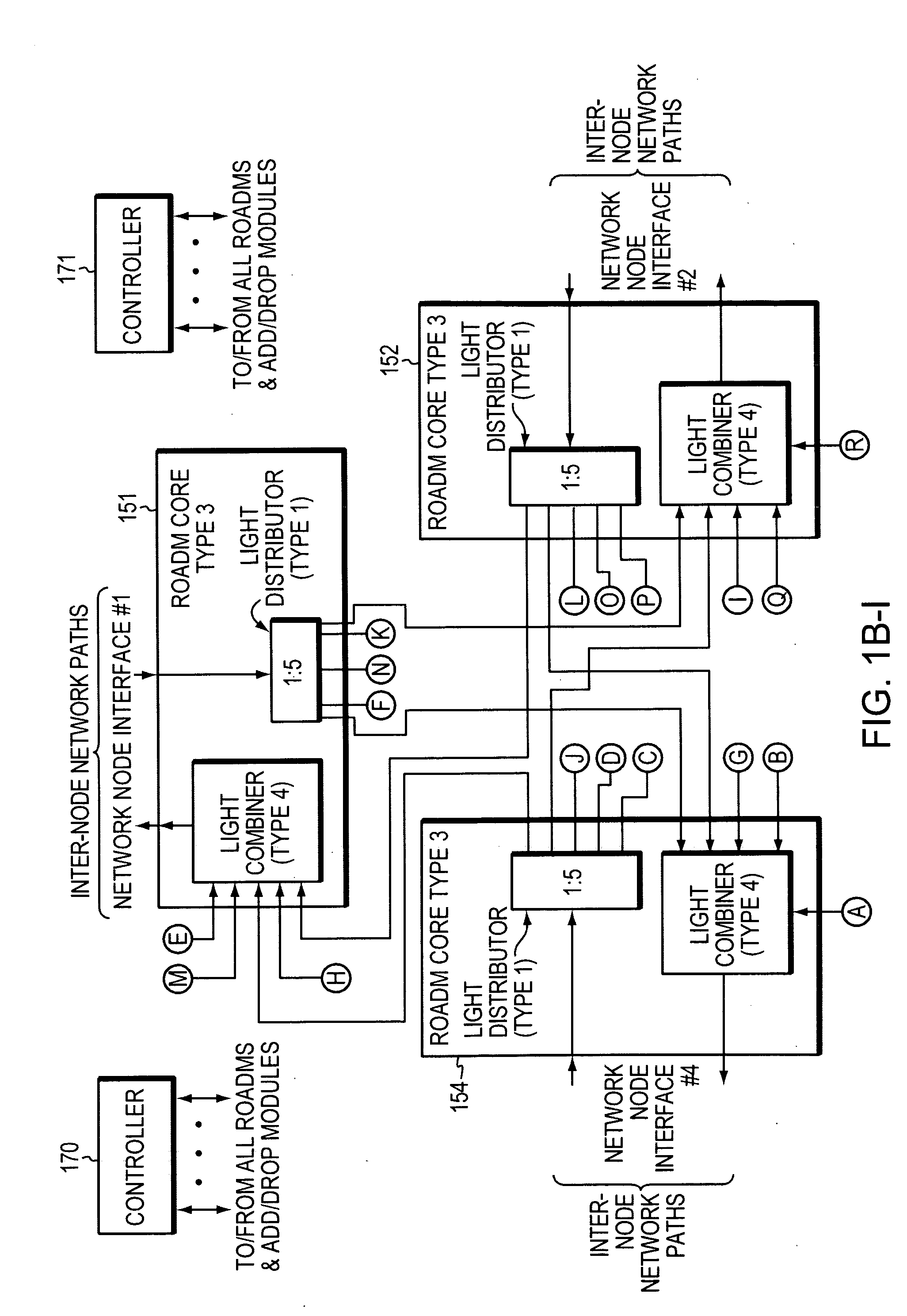Methods and apparatus for performing directionless wavelength addition and subtraction within a ROADM based optical node
a technology of optical nodes and directionless wavelengths, applied in multiplex communication, data switching networks, instruments, etc., can solve problems such as network level inflexibility
- Summary
- Abstract
- Description
- Claims
- Application Information
AI Technical Summary
Benefits of technology
Problems solved by technology
Method used
Image
Examples
Embodiment Construction
[0045]A description of example embodiments of the invention follows.
[0046]The present application incorporates by reference the contents of U.S. patent application Ser. No. 11 / 697,527, entitled “MULTIFUNCTIONAL AND RECONFIGURABLE OPTICAL NODE AND OPTICAL NETWORK,” published Jan. 17, 2008, as U.S. Patent Application Publication No. 2008 / 0013954, in its entirety as if fully set forth herein. The teachings of all patents, published applications and references cited herein are incorporated by reference in their entirety.
[0047]In an optical mesh network, it is possible to route optical signals at different wavelengths (“wavelengths”) around network failures using the reconfigurable capability of the reconfigurable optical add / drop multiplexer (ROADMs) used within these networks. In an event of a network failure and wavelength re-routing, a wavelength which was previously being received on one network node interface within the optical node may now be received on a different node interface...
PUM
 Login to View More
Login to View More Abstract
Description
Claims
Application Information
 Login to View More
Login to View More - R&D
- Intellectual Property
- Life Sciences
- Materials
- Tech Scout
- Unparalleled Data Quality
- Higher Quality Content
- 60% Fewer Hallucinations
Browse by: Latest US Patents, China's latest patents, Technical Efficacy Thesaurus, Application Domain, Technology Topic, Popular Technical Reports.
© 2025 PatSnap. All rights reserved.Legal|Privacy policy|Modern Slavery Act Transparency Statement|Sitemap|About US| Contact US: help@patsnap.com



